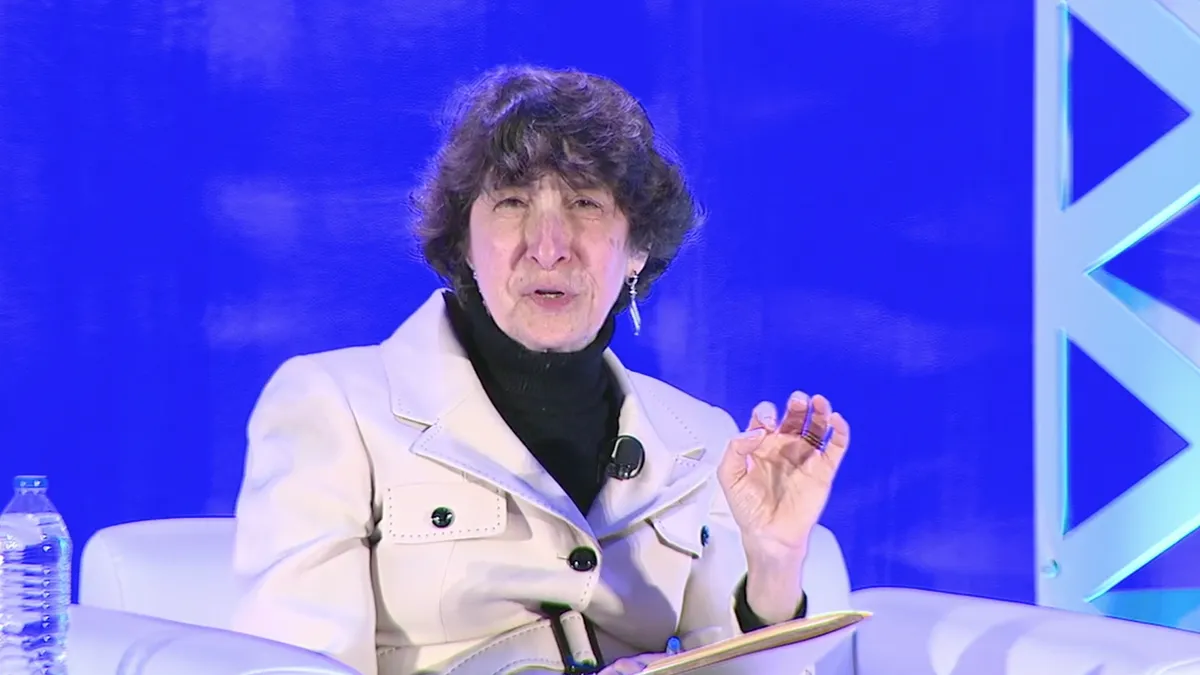Editor's note: Katie Clarey is new to both the HR Dive team and HR. This piece marks the launch of her new series, Back to Basics. If you're new to the field (or just need a little refresher), follow along as she speaks with legal experts, peruses federal guidance and lays out the basics of federal employment law. She can be reached at [email protected].
Let's set a scene. A candy factory employee — we'll call her Betsy — broke her wrist in a roller skating accident and needs corrective surgery several months after her fateful spill at the rink. She tells her manager that she'll need a week and a half off following the surgery for recovery. Though she hasn't articulated it, Betsy has invoked one of the nation's most important employment laws: the Family and Medical Leave Act (FMLA).
So what happens next? What should the manager say? What does HR need to do?
After printing off and flipping through the U.S. Department of Labor (DOL)'s 76-page FMLA guide book (which, to my delight, includes FMLA-themed comics), I decided it was time to enlist some professional help. So I called up Jeff Nowak, a partner at Franczek Radelet and all-around FMLA guru.
"The FMLA is a federal employment law that provides eligible employees up to 12 weeks of leave in a 12 month period of time in certain situations where they can't work because of their own serious health conditions or because they have to care for a family member with a serious health condition," Nowak said in an interview. "It also covers things like pregnancy and bonding time after a childbirth or placement of a child. That's FMLA in a nutshell."
There's your neat and tidy definition of FMLA. Now let's unpack what that means and how it all happens.
Situations that necessitate FMLA
DOL's Wage and Hour Division (WHD), which enforces the FMLA, outlined four scenarios that would qualify a worker for FMLA leave:
- The birth or placement of a child.
- The need to care for a spouse, child or parent who has a serious health condition (which includes "incapacity due to pregnancy and for prenatal medical care," according to DOL).
- The employee's own serious health condition (which includes "incapacity due to pregnancy and for prenatal medical care," says DOL), which renders him or her unable to perform the essential functions of the job.
- Any qualifying need related to the fact that a spouse, child or parent is a military member on covered active duty or called to covered active duty status.
Our girl Betsy, the hypothetical worker in the candy factory with the injured wrist, would need FMLA because of her serious health condition, which prevents her from pulling taffy or wrapping lollies. But is she automatically entitled to it?
Employer and employee eligibility
No, not everyone is eligible for FMLA. First, employees must work for an FMLA-covered employer. According to WHD, those include private-sector entities, public agencies and schools. FMLA covers private employers if they employ "50 or more employees in 20 or more workweeks in the current or previous calendar year." FMLA covers all public agencies and schools, regardless of how many people they employ. Fun fact: Educational agencies like school boards are included.
Next, employees need to be eligible themselves. "You're not eligible for FMLA on day one of your employment," Nowak said. "You have to have worked for your employer for 12 months." Nowak went on to clarify that those 12 months need not occur consecutively; employees add up their 12 months at a company over a seven-year period. "You also have to have worked 1,250 hours [within 12 months] prior to the time that you need to take leave," Nowak noted. If employees work 40 hours a week, five days a week and take two weeks of vacation a year, they log 2,000 hours. It only takes 1,250 hours to make FMLA status. "So really you could be a part-time employee and still gain the benefits of FMLA," Nowak said.
The process
Like we saw with Betsy, the employee usually starts the process by providing notice of the need for leave. Our fictional candy factory had pretty lax procedures when it came to requesting leave, but WHD stipulates that an employer may require its employees to comply with its formal policies for requesting leave, unless something prevents the employee from doing so. WHD also specifically forbids employers from discriminating against employees taking FMLA leave. But, back to the point, the onus is generally on the employee to ask for FMLA leave.
"The employee has to provide sufficient facts to put the employer on notice that the absence may be covered by FMLA," Nowak said. "They don't have to use the letters FMLA, they don't even have to cite federal law. They simply have to provide enough facts to the employer to indicate that the absence might be covered by FMLA."
It's worth noting that employees need to give management a heads up about their leave at least 30 days in advance of their time off. This does not stand, however, when situations arise that make it impossible to do so. Had Betsy, our perpetual example, needed surgery immediately after wiping out on roller skates, she may have qualified for FMLA leave that very night.
Once an employee gives his or her notice, the responsibility shifts to the employer. Because Betsy told her supervisor about her wrist surgery and submitted a request for time off, the next actions lie with those managing the candy factory. Let's break down the next steps:
Determine if the employee is eligible
Management will need to head over to HR at this point to figure out if the employee asking for leave is eligible. The employer also needs to give the employee eligibility and rights & responsibility notices, provided by WHD. In Betsy's case, her manager finds out through HR that she's worked for the candy factory for three years in a full-time position.
Certify the leave, if necessary
Some entities require a certification of the employee's need for leave. If that applies, WHD has said the employer will need to notify the employee of the process and complete the certification within 15 calendar days. After the employer finishes up the certification process, it must tell the employee in writing whether or not his or her request for leave is approved.
Determine if the leave request is qualified under FMLA
Remember, there are just four reasons an employee can go out on FMLA leave.
Grant or deny the leave request
At this point, the employer will also need to provide the employee a designation notice, another form provided by WHD.
Maintain health benefits during the leave
Once an employee is on leave, the employer is legally obligated to maintain his or her health benefits throughout. "The employee maintains their same health insurance that they had as if they were still on the job," Nowak said. "That's a critical piece of FMLA." The employee, however, must continue to make any normal contributions to the cost of the health insurance premiums, according to WHD.
Restore the employee
Once the employee comes back to work, the employer will need to return him or her to the same position, or an equivalent one. "Equivalent is defined as nearly identical," Nowak said. "It's either the same or nearly identical position to the one that they held." So when Betsy returns back to work after her surgery, she can expect to pull taffy and wrap lollies or bundle lozenges and package chocolates.
Where employers mess up
Nowak identified two areas of FMLA that consistently trip up employers.
First, managers fail to recognize an employee's need for FMLA. Remember that employees don't need to cite FMLA when asking for it. "An employee who might call off work because of a chronic bad back or a migraine headache is actually protected by the FMLA," Nowak said. When a manager doesn't realize an employee is asking for FMLA, he or she might dock the employee an attendance point or otherwise penalize the employee. "That's a problem under FMLA," Nowak said.
To combat this, employers can train managers and supervisors to recognize FMLA requests. WHD, in fact, recommends this. "Providing FMLA training regularly helps to make sure those responsible for implementing the FMLA are up-to-date on the requirements of the law and the employer's policy, procedures and practices," according to its employer guide.
Second, employers tend to fumble with intermittent FMLA leave. "Managing intermittent leave is perhaps the single biggest problem for employers," Nowak said. Intermittent leave is allowed for employees with chronic conditions. Let's go back to Betsy. Say, in addition to her wrist problems, she also has migraine headaches once in a while. They're so painful and debilitating, they prevent her from working. When she does wake up with a migraine, she calls her supervisor and asks for the day off. Luckily, her managers were properly trained on the FMLA, so she never has a problem.
But some employers haven't studied up on FMLA as much as they need to. "Episodic, unplanned leaves of absence often lend themselves to misuse, to abuse," Nowak said. "It's difficult to determine on a day-to-day basis whether employees are actually suffering from a condition." That means employers are sometimes faced with tough calls, especially because sporadic, unforeseen absences covered by FMLA cause staffing problems.
At this point, we know which employers and employees the FMLA covers and how the process of FMLA leave unfolds. I'll start covering more FMLA-related stories, which you can read on www.hrdive.com or in our daily newsletter. To send you forward, I'll leave you with a to-do list compiled from Nowak's insight and DOL's information.
FMLA to-do list:
- Hang DOL's FMLA poster and give FMLA-eligible employees a written notice that contains the same information given by the poster.
- Maintain and enforce call-in procedures.
- Train supervisors and managers. DOL even provides a powerpoint.
- Document, document, document! See page 66 of the Employer's Guide to the Family Medical Leave Act for a list of what employers should record.
- Communicate! Check in with employees before, throughout and after their leave.






















